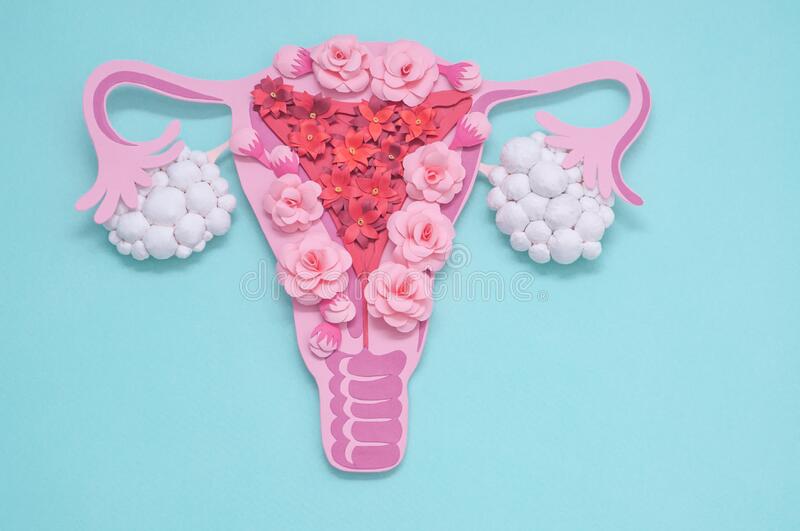Ενδομητρίωση (endometriosis) είναι η καλοήθης νόσος στην οποία ιστός, παρόμοιος με αυτόν του ενδομητρίου που επενδύει το εσωτερικό τοίχωμα της μήτρας (endometrial-like tissue), βρίσκεται εκτός της μήτρας (1). Πιθανές εστίες είναι οι οωθήκες, οι σάλπιγγες, το περιτόναιο (διάφανος υμένας που καλύπτει τα όργανα της πυέλου), το έντερο, το ουροποιητικό σύστημα (ουροδόχος κύστη κι ουρητήρες) καθώς και λιγότερο συχνές εστίες ( νεύρα, διάφραγμα, κοιλιακό τοίχωμα, πνεύμονας κ.ά.).
Η ορμονοευαίσθητη αυτή νόσος (ευαίσθητη στα οιστρογόνα), εμφανίζεται στην αναπαραγωγική ηλικία και προσβάλει περίπου το 10% των γυναικών (2). Σε γυναίκες με υπογονιμότητα ή χρόνιο πυελικό πόνο, η συχνότητα ανέρχεται σε 35% έως και 50% (3). Αυτό την καθιστά την 2η σε συχνότητα γυναικολογική νόσο στο Ηνωμένο Βασίλειο (4). Όντας ορμονοευαίσθητη, η νόσος τυπικά βελτιώνεται μετά την εμμηνόπαυση.
Η ενδομητρίωση είναι μια ετερογενής νόσος, που μπορεί να σχετίζεται με πληθώρα διαφορετικών συμπτωμάτων. Τυπικά, η ενδομητρίωση σχετίζεται με υπογονιμότητα (5) και πόνο στην πύελο (6) (την περιοχή στην κοιλιακή χώρα, από τον ομφαλό και κάτω). Ο πόνος μπορεί να είναι από ήπιος έως πολύ έντονος, αμέσως πριν, κατά τη διάρκεια ή μετά την έμμηνο ρύση. Επίσης, ο πόνος μπορεί να μην σχετίζεται χρονικά με την έμμηνο ρύση. Ανάλογα με την εστία, η νόσος μπορεί να σχετίζεται με συμπτώματα από το έντερο ( πόνος κατά την αφόδευση, αιμορραγία, ‘’φουσκώμα’’, δυσκοιλιότητα, διάρροια), το ουροποιητικό ( καύσος κατά την ούρηση, αιμορραγία, συχνοουρία, αδυναμία αδειάσματος της ουροδόχου κύστεως), πόνο κατά τη σεξουαλική επαφή, πόνο στη δεξιά ωμοπλάτη (ενδομητρίωση διαφράγματος) ή πόνο στη μέση και τα κάτω άκρα( ενδομητρίωση ιερού πλέγματος και ισχιακού νεύρου) . Μπορεί, επίσης, να σχετίζεται με έντονη κούραση και καταβολή. Σε ορισμένες περιπτώσεις, ωστόσο, η ενδομητρίωση δεν προκαλεί συμπτώματα (ασυμπτωματική). Δεν υπάρχει σαφής συσχέτιση ανάμεσα στο είδος/ βαρύτητα των συμπτωμάτων και τον τύπο ή έκταση της νόσου (7).
Αναφορές:
- Sampson, J. A. Peritoneal endometriosis due tο premenstrual dissemination of endometrial tissue into the peritoneal cavity. Am. J. Obstet. Gynecol. 14, 422–469 (1927).
- Zondervan, KT, Becker, CM, Koga, K, et al. Endometriosis. Nat Rev Dis Primers 2018; 4(1): 9.
- Bulun, SE. Endometriosis. N Engl J Med 2009; 360: 268–279.
- University College London Hospitals. General information about Endometriosis. Accessed February 2014
- Hurd, W. W. Criteria that indicate endometriosis is the cause of chronic pelvic pain. Obstet. Gynecol. 92, 1029–1032 (1998).
- Berkley, K. J., Rapkin, A. J. & Papka, R. E. The pains of endometriosis. Science 308, 1587–1589 (2005).
- Working group of ESGE, ESHRE, and WES, Keckstein J, Becker CM, Canis M, Feki A, Grimbizis GF, Hummelshoj L, Nisolle M, Roman H, Saridogan E, Tanos V, Tomassetti C, Ulrich UA, Vermeulen N, De Wilde RL. Recommendations for the surgical treatment of endometriosis. Part 2: deep endometriosis. Hum Reprod Open. 2020 Feb 12;2020(1):hoaa002.

